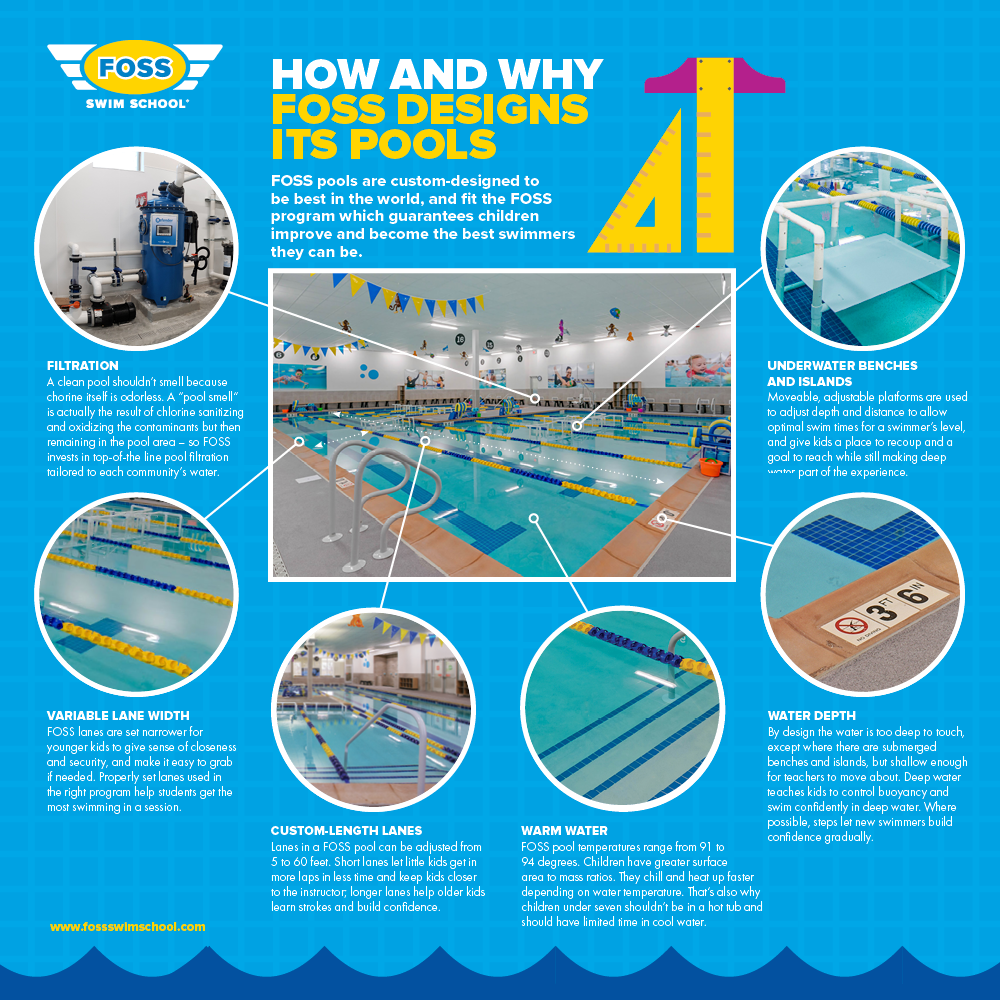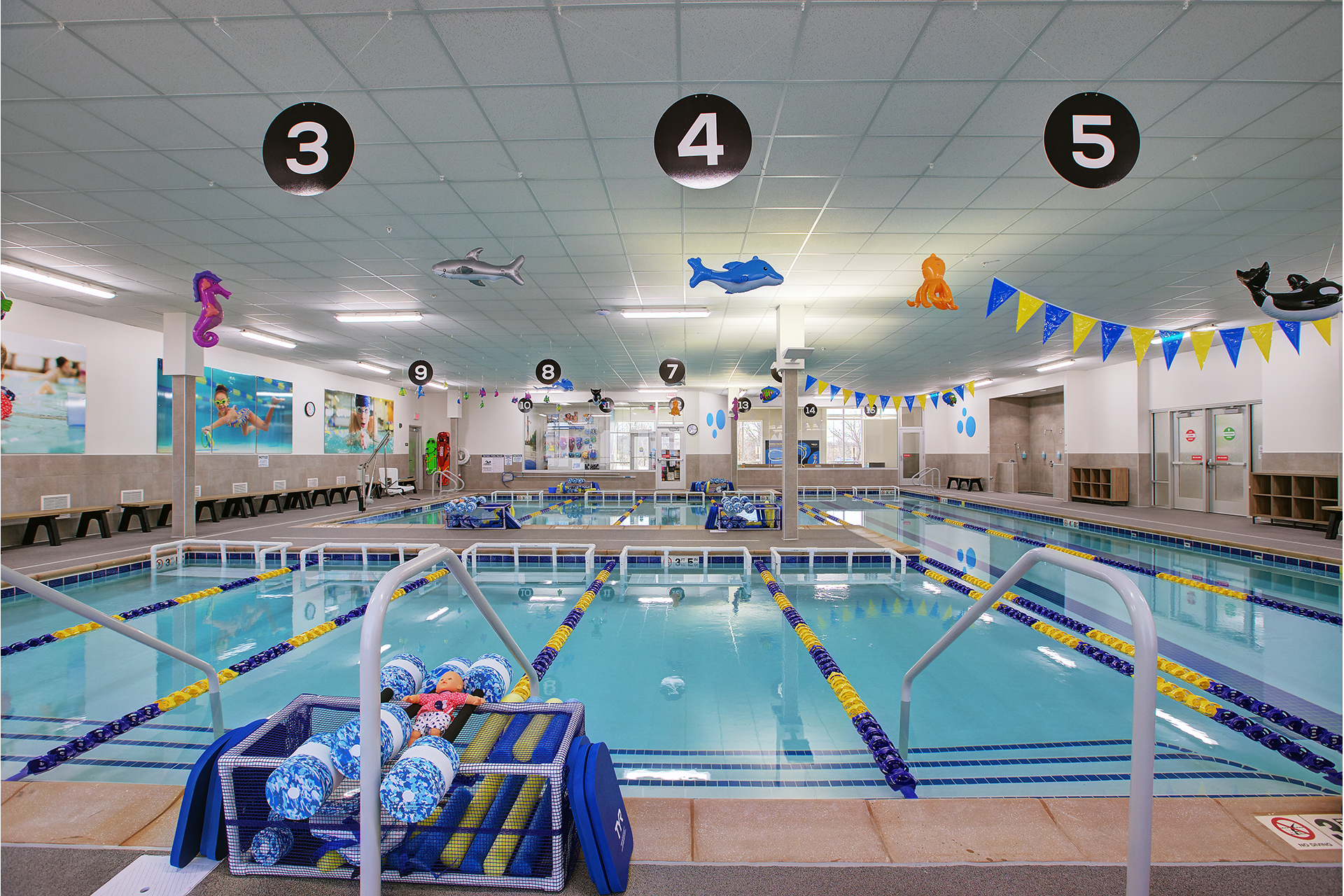Walk into a Foss Swim School and you will find a special kind of pool: A purpose-built teaching pool. Founder Jon Foss has personally overseen or developed many of the custom features of these pools, all of them purposeful to support Jon’s teaching philosophy in a way a standard public pool can’t.
Jon swam, coached and taught in pools since 1972 and has seen how bad they can be. He started designing in 1994 and has since designed 16 facilities with a total of 23 pools.
“The goal is to teach swimming as a life skill,” says Jon. “Being able to swim 300 yards freestyle with side-breathing is as basic a skill as learning to walk on land.” But like learning to walk – which involves scooting, crawling, pulling oneself up and walking with assistance – kids learn to swim best with a natural progression. And FOSS pools are built around that idea.
“A 3-year old starts on the steps or islands and works up to swimming 50 to 100 feet in a 30-minute lesson,” says Jon. “For a nine-year-old, the goal is maybe 1,700 feet. We set up our pools so lanes can be adjusted to get the right distance in the right number of laps while maintaining proper technique.”
Three ways FOSS pools support its teaching philosophy
“The priority of our pool design revolves around supporting the three pillars of our swimming philosophy: Safety, continuous swimming and safe exposure to deep water,” says Jon.
- Swimmer’s safety is paramount and factored into all length and width configurations of lanes, stations and teaching areas to maximize teacher/student contact.
- Continuous swimming refers to features that allow kids to swim together, so more (or even all) of their lesson time is spent practicing rather than waiting.
- Safe exposure to deep water means kids can’t touch bottom all the time, but if needed, they can.
All of these require adjustments to the pool for safety and comfort.
A breath of fresh air (by design)
Comfort and safety also extends to things people can’t see, like filtration and air quality. “If you walk into a pool area and it has an overwhelming ‘pool’ smell, it’s generally not a good thing,” says Jon. That’s because the smell is caused by chlorines that have combined with contaminants and then bubbled up, Called chloramines, they are what people smell if not cleared away. FOSS invests heavily in HVAC fresh air systems to provide quality air in their facilities.
Even salt pools (which are featured at some FOSS locations), often believed to be chlorine-free, manufacture a chlorine/chloramine byproduct from the salt that require proper HVAC to address.
“All of our pools have redundant systems from pumps to filtration to ensure our pools continue running safely and efficiently all the time,” Jon says. “We constantly measure turbidity, alkalinity, hardness, free and combined chlorines, and oxidize the contaminants with the best possible technology. “In fact, our newest pump rooms at Maple Grove in Minnesota and Elmwood Park in the Chicago area are considered the best in entire U.S.,” he adds. “FOSS has custom-designed and modified the pools at its facilities to be best-in-class,” Jon concludes. “And we continue to adapt and invest so swimmers and families will have the best, most productive experience possible.”

